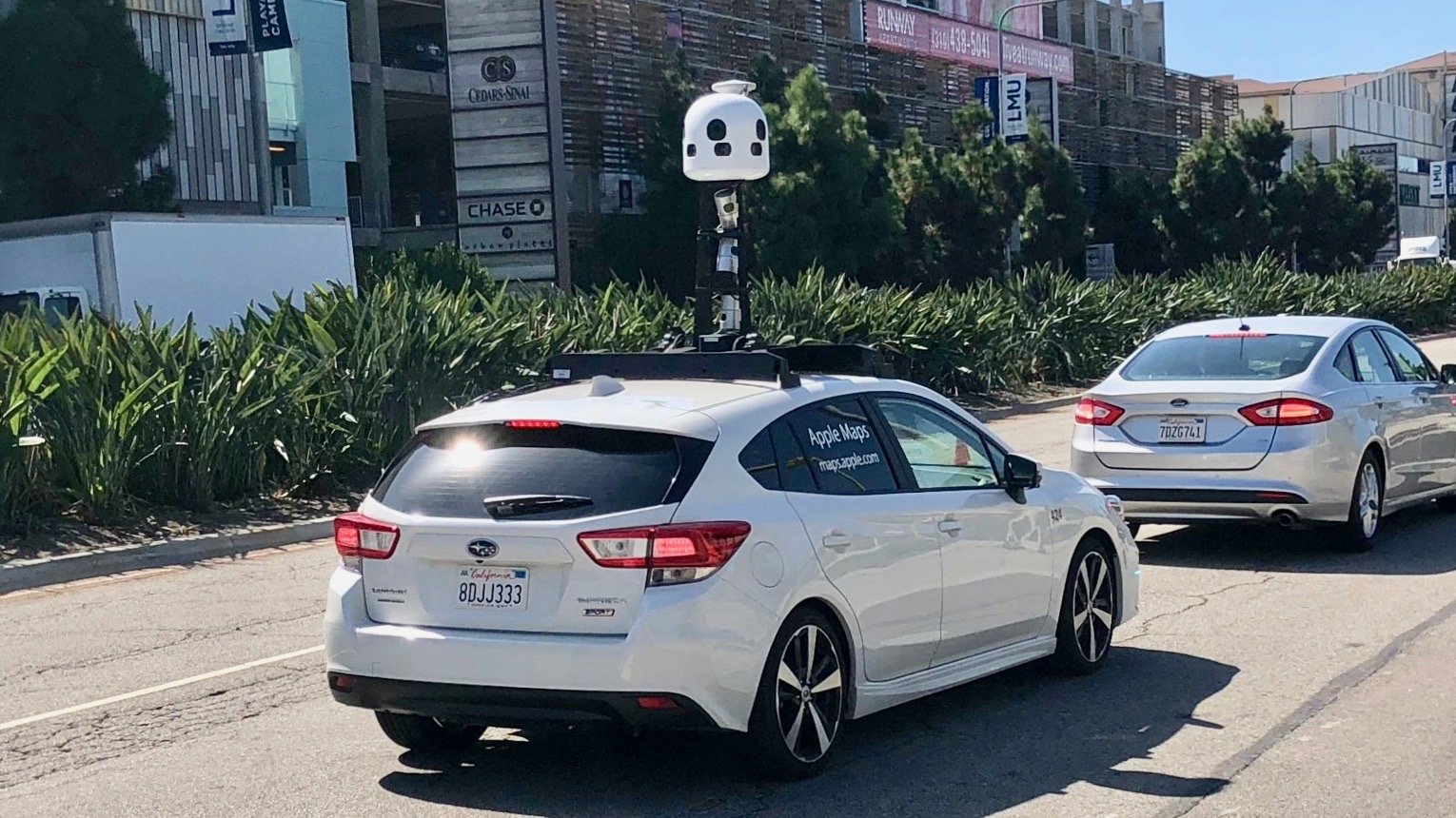
Meet Eyedrive, Apple’s system for building Maps and testing autonomous driving
by Filipe EspósitoApple has been operating vehicles equipped with advanced sensors for some time, which are dedicated to collecting data to enhance Apple Maps. 9to5Mac has now learned exclusive details about how Apple uses these vehicles and manages such data.
Twitter user @YRH04E shared with us some internal Apple materials that reveal how the company operates those special cars with sensors and the protocols that the Apple Maps team must follow to capture images and other data across the streets.
Apple began collecting data using modified vans, but now field operators drive a white Subaru Impreza, which is internally known as “Ulysses.” These vehicles are part of Apple’s 3D Vision team, which is responsible for combining multiple data with computer vision and machine learning technologies to provide 3D images on Apple Maps.
The car is modified with dozens of hardware parts, including a tower at the top of the vehicle with advanced high-resolution cameras and Zeiss lenses, LiDAR scanners, and a 2013 Mac Pro that processes all captured data in real-time. Everything is controlled by the EyeDrive unit, which is a modified iPad with the EyeDrive app that provides the assignments to be done and also allows operators to manage captured data.
The vehicles are also equipped with 4 SSDs of 4TB each, which are filled up in about a week of work, and Apple relies on UPS overnight delivery to replace these SSDs as quickly as possible. The other type of car is a self-driving Lexus used for Apple’s autonomous vehicle efforts, which has the code name “Tyche.” Each modified vehicle has its own version of the EyeDrive app as you see below:
Apple keeps its modified cars in a safe and undescribed location, which is rented to a front company to maintain the anonymity of the real owner of the vehicles. Ulysses units are typically operated by a driver and another person who manages the EyeDrive system, and they have precise instructions to collect the data.
The team must start the capture in the morning when the sun is at 30 degrees and drive until when it’s reaching 30 degrees at night, otherwise the sun interferes with how the LiDAR sensors work. Apple also requires that captures must be taken in perfect weather conditions in order to provide consistent images. Each car is carefully inspected before field work to ensure that all equipment is working as expected.
Once they’re on the road, the EyeDrive app on iPad tells the team where they should drive to capture data. The operator can check the images through the iPad in real-time and confirm if the capture looks good or if it has any issues. The streets where the car is driven are marked with a green outline, and the operator can mark if a specific street cannot be accessed either because it’s a private area or a road under construction.
At the end of the day, the systems are turned off and everything is safely saved. The car is once again inspected and the SSDs with captured data are immediately sent to Apple.
All that data is mainly used to enhance features like Flyover and Look Around, where users can explore 3D cities on Apple Maps. These vehicles are commonly seen in the United States, but Apple is slowly expanding them to Canada, Europe, and Japan.
Have you ever spotted an Apple Maps car on the streets? Let us know in the comments below.